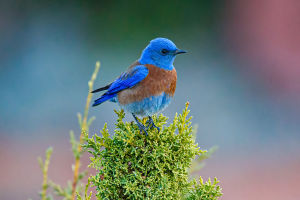Have you ever wondered what it would feel like to live in a world where endangered species like tigers or sea turtles were just memories?
While many people may feel disconnected from the animals they share the planet with, there's one powerful tool that can change this: education. Whether it's in a classroom or through a community event, education has the potential to transform attitudes toward wildlife and, in turn, drive meaningful conservation efforts. But how exactly does it work?
The Importance of Awareness
Most of us probably don't think about endangered species in our daily lives, yet their struggle for survival is a pressing global issue. In fact, nearly 1 million species face the threat of extinction, and many are at risk due to human activity, habitat destruction, and climate change. But awareness is the first step in change. The more we know about the plight of these species, the more we care.
Here's where education comes in: by spreading knowledge, we can reshape how people view and treat wildlife. When individuals understand the importance of biodiversity and the interconnectedness of ecosystems, they are more likely to take actions that support conservation.
How Education Helps in Raising Awareness?
Educating people about wildlife protection can lead to both personal and community-driven efforts to make a difference. Here's how:
1. Building Empathy Through Storytelling
Many conservation initiatives use stories to make wildlife protection more relatable. Think about the way nature documentaries tell the stories of animals facing survival challenges. They engage viewers emotionally and show the importance of protecting these creatures. Educational programs that feature real-life examples, such as the story of an animal species that has been saved from extinction, help build empathy. When we connect emotionally with a species, we're more likely to act on their behalf.
2. Promoting Positive Behavioral Change
Education doesn't just focus on information—it also aims to inspire change. When children and adults are taught about the consequences of poaching, habitat destruction, or pollution, they can begin to see how their actions affect wildlife. For example, something as simple as choosing eco-friendly products or supporting sustainable tourism can directly impact species' survival. In this way, education encourages responsible consumer behavior and lifestyle choices.
3. Influencing Policy and Legislation
Educated citizens are more likely to advocate for policies that protect wildlife. Whether it's lobbying for stricter regulations against illegal hunting or supporting national parks and protected areas, an informed public can push for change at higher levels. Education empowers people to make their voices heard, whether through voting, petitioning, or participating in campaigns that protect endangered species.
The Role of Schools and Communities
While education on wildlife conservation often starts in schools, it doesn't end there. Communities play an essential role, too. Consider how some organizations host wildlife awareness days, zoo visits, or nature walks. These experiences help people interact with wildlife directly, making the issue feel real rather than abstract.
For example, when children visit a wildlife sanctuary and see endangered species up close, they don't just learn about the importance of preserving these animals—they feel it. This kind of hands-on, immersive education makes the issue more personal and memorable. As a result, children who grow up learning about wildlife protection are more likely to continue those values into adulthood, spreading awareness further.
Case Studies of Successful Education Campaigns
1. The Sea Turtle Protection Movement
Organizations like the World Wildlife Fund (WWF) have launched various educational campaigns that highlight the dangers faced by sea turtles, such as poaching and plastic waste. Through documentaries, social media campaigns, and school programs, these efforts have educated millions of people about the turtles' plight. This kind of awareness has led to increased support for conservation efforts, such as beach clean-ups and banning single-use plastics. Communities have rallied together to protect turtle nesting sites, and tourist destinations have adjusted their practices to minimize harm to turtle populations.
2. The Save the Rhino Campaign
The rhino population has seen a drastic decline due to illegal poaching for their horns. However, educational initiatives like “Save the Rhino” have brought attention to this issue through social media, documentaries, and partnerships with schools. These programs not only inform people about rhinos but also highlight the impact of their disappearance on the ecosystem. As a result, there has been a rise in donations, wildlife reserves dedicated to rhino conservation, and anti-poaching laws that are helping to stabilize populations.
Education as a Long-Term Strategy
While it's clear that education plays a pivotal role in wildlife protection, it's important to remember that change takes time. Shifting societal attitudes toward wildlife and environmental protection doesn't happen overnight. But each lesson learned, each campaign shared, and each person educated creates ripples of change that can reach further than we expect.
That's why it's so important for organizations, schools, and communities to continue their efforts in promoting wildlife education. Whether through formal education systems or grassroots campaigns, we have the power to teach the next generation how to appreciate and protect the animals that share our world.
The Bigger Picture: Why It Matters
At the end of the day, it's about more than just saving individual species. It's about safeguarding the delicate balance of nature. Every species, from the tiniest insect to the largest predator, plays a role in maintaining a healthy ecosystem. When one species disappears, it can set off a chain reaction that affects everything else. Education gives us the tools to recognize this interconnectedness and take responsibility for our actions.
By educating ourselves and others about the challenges facing wildlife, we can ensure that future generations will inherit a planet where animals thrive, ecosystems flourish, and biodiversity continues to enrich life. Through awareness, empathy, and action, we can make a lasting difference in the fight for wildlife conservation.


